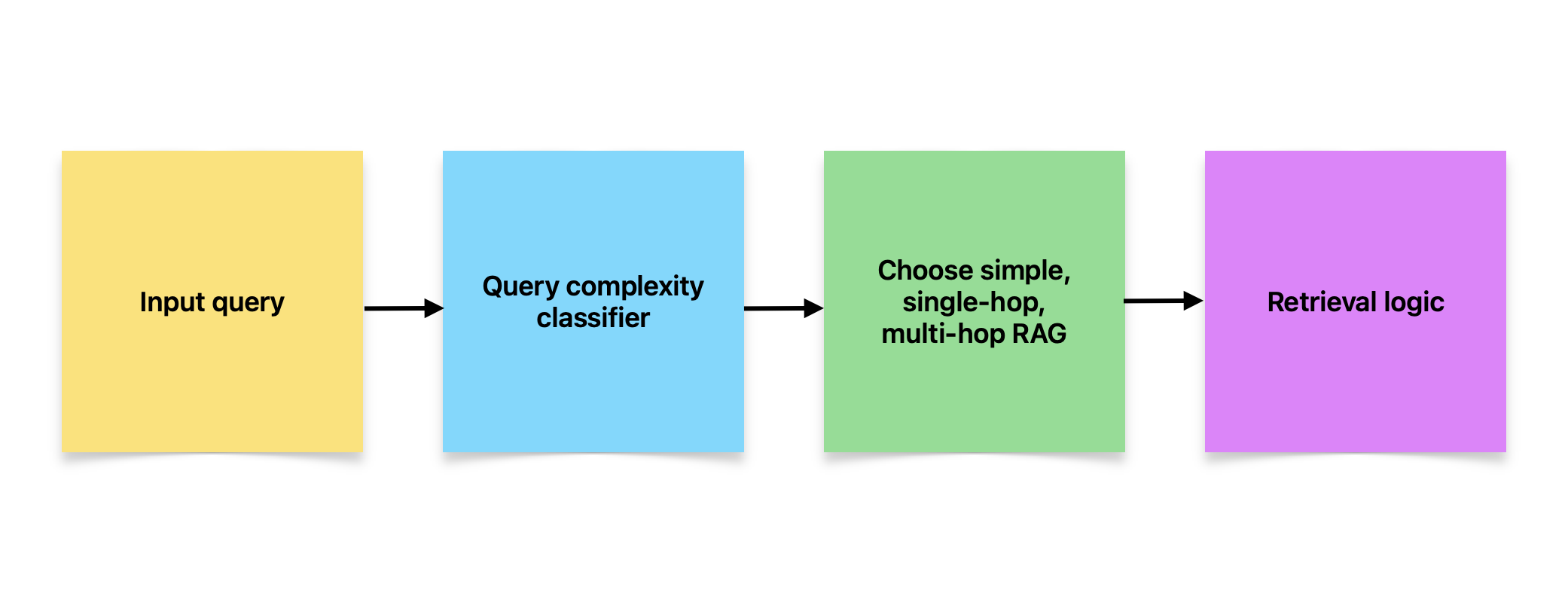What are Adaptive Software Applications?
Modern software applications are increasingly expected to adapt dynamically to user needs, environmental changes, and varying complexities of tasks.
Adaptive software applications achieve this by:
- Adjusting their behavior based on the context or input complexity.
- Optimizing resource usage to deliver the best possible experience.
Example
- Streaming Services: Dynamically adjust video resolution based on internet bandwidth.
- Navigation Apps: Recompute routes in real time based on traffic updates.
- E-commerce Chatbots: Tailor responses to customer queries based on their purchasing history or preferences.
This adaptability minimizes inefficiencies and ensures that the software remains effective across diverse scenarios.
Relevance of Adaptability in RAG and Generative AI
In one of my previous post we had gone into fundamentals and motivation behind RAG.
Generative AI applications increasingly rely on Retrieval Augmented Generation (RAG) to enhance their performance. RAG integrates the pre-trained knowledge of large language models (LLMs) with external knowledge sources to generate accurate and contextual responses.
However, not all queries require the same level of RAG complexity.
A static approach to RAG can lead to:
- Resource Waste: Overusing compute for simple queries.
- Inaccuracies: Using overly simplistic methods for complex queries.
Adaptive RAG extends the principle of adaptability to the world of RAG, allowing systems to tailor their retrieval and generation strategies based on the complexity of the user query.
Customer Support as a Motivating Example
Let’s consider a virtual assistant deployed for customer support at a telecom company. The queries it handles range from simple to complex:
- Simple Queries: “What are the current data plans?”
- Requires the LLM’s in-built knowledge (zero query).
- Medium Complexity Queries: “How do I reset my router?”
- Retrieves a single relevant document from the company’s knowledge base.
- Complex Queries: “Can you compare data plans based on my usage?”
- Aggregates data from multiple sources (e.g., pricing lists, FAQs).
A one-size-fits-all RAG approach here would either lead to slow responses or inaccurate answers. This makes adaptability critical.
Adaptive RAG: Concept and Implementation
Adaptive RAG, as proposed by Jeong et al., optimizes the RAG process by dynamically selecting the retrieval strategy based on the complexity of the user’s query.

How It Works:
- Query Complexity Assessment:
- Queries are classified as simple, medium, or complex using a machine learning model.
- Features like query length, number of entities, or past retrieval results help determine complexity.
- Dynamic Retrieval Strategy:
- Simple Queries: Directly use the LLM’s parametric knowledge.
- Medium Queries: Retrieve and utilize data from a single external source.
- Complex Queries: Aggregate data from multiple documents or perform iterative retrievals.
- Training the Classifier:
- Labels are generated by evaluating which type of RAG (zero, single, or multi-query) produces the correct answer during training.
- Approximation methods are used for cases where no retrieval strategy suffices.
Adaptive RAG in Action: Customer Support Example
Returning to our customer support assistant:
- Simple Query (Zero Query RAG):
- User: “What are the current data plans?”
- The assistant uses the LLM’s internal knowledge for an instant response.
- Medium Query (Single Retrieval):
- User: “How do I reset my router?”
- The assistant retrieves the router troubleshooting guide from the knowledge base and shares relevant steps.
- Complex Query (Multi-Document Retrieval):
- User: “Can you compare data plans based on my usage?”
- The assistant pulls data from pricing documents, user feedback, and usage metrics, then synthesizes the information into a personalized recommendation.
With Adaptive RAG, each query type is handled optimally, ensuring both speed and accuracy.
Broader Implications of Adaptive RAG
- Efficiency Gains: Reduces unnecessary computational overhead for simple tasks.
- Improved Accuracy: Adapts strategies to better address complex queries.
- User Satisfaction: Delivers faster, more relevant answers, enhancing overall experience.
Other Use Cases:
- Legal Research: Tailoring retrieval complexity based on the specificity of legal queries.
- Healthcare Assistants: Providing personalized medical advice with varying retrieval depths.
- Educational Platforms: Offering nuanced answers to student questions.
Summary
Adaptive RAG bridges the gap between the static nature of traditional RAG and the dynamic requirements of real-world applications. By drawing inspiration from adaptive software architectures, it ensures efficient, accurate, and resource-conscious performance in Generative AI systems.